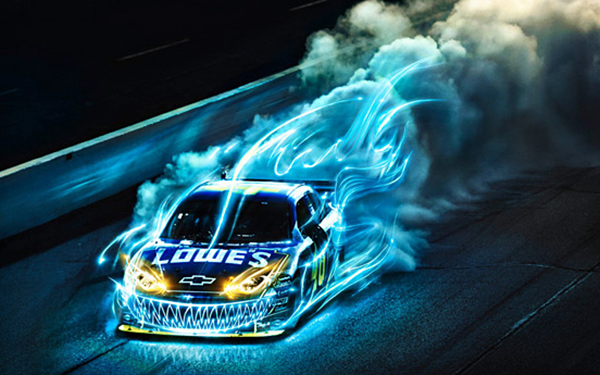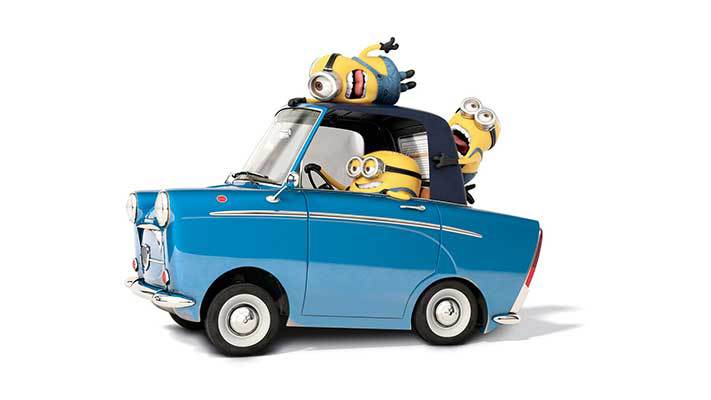What is in common between the growth of Uber and the development of the era of cars?
- Transfer

Years pass, innovation continues.
Uber recently won another small victory. More than a month ago, the Ontario Provincial Court refused a request from the Toronto authorities to ban this road service. Uber is currently alive and well and thriving in this place. Not like in my hometown, Vancouver, where service remains banned. And this is despite the fact that Vancouver has the worst ratio in the country for the ratio of taxi to number of inhabitants (at least according to the results of one study) and the highest cost of taxi services in Canada.
For Uber, all this controversy is not new. With the distribution of the service around the world, cities, provinces and entire countries responded with a continuous stream of orders to stop the illegal actions of the service, threats and fines. Their experiences are mainly associated with standards for issuing Uber permissions for taxation, customer safety and the impact of the service on the traditional taxi industry.
Of course, it is not the first time for the passenger transportation market to experience dramatic changes in connection with the advent of new technology. More than a hundred years ago, the dominant standard of vehicles was opposed by innovation, which also undermined the traditional industry and caused strong resistance. A quick glance through the history books, we will see that rethinking the chaotic arrival of cars gives us the opportunity to see in an interesting perspective not only the saga of the Uber service, but also the life cycle of innovations.
The need for change
At the end of the nineteenth century, horses were the main mode of transport. The average New Yorker made 297 horse rides throughout the year, and the total number of horses involved in transporting people and goods in the city around the clock was approximately 200 thousand.
But everyone who has ever had a ride in a carriage in Central Park knows that a horse is far from an ideal means of transportation. The average horse gives off-hill from 9 to 14 kg of manure and up to 4 liters of urine daily. Some areas in the literal sense were ankle-deep in animal excrement, which attracted a huge number of insects that spread the infection.
Avoiding the oppressive details, I would say that several important parallels can be drawn between the situation described above and the modern passenger transportation industry. Taxis are incredibly important for travel in many cities, and yet, it is worth recognizing that the system has its drawbacks. We can see an insufficient number of cars, especially during rush hours and in certain areas. Prices are too high, and customer service at times leaves much to be desired.
At the same time, competition is suppressed by a system of medallions for taxi drivers, according to which local authorities give out a limited number of prohibitively expensive medallions necessary for driving a vehicle (for example, in New York at an auction you can see how the price for this item comesup to a million dollars). And life for drivers who pay about $ 100 a day (or more) just for the privilege of driving a taxi is not easy: extremely long working days, unpredictable customers and low net income are commonplace. There is no arguing here: this situation also requires change.
Split and resistance
If we talk about the problem with horses, then new technologies have offered a promising solution. The first gas-powered cars appeared in Germany in the early 80s of the XIX century, and the Ford Model T was put on the conveyor in 1908.
The cars had many obvious advantages: they provided a cleaner (at least in the short term), more reliable and more civilized way of moving around cities than horses. But this did not mean at all that they were greeted with joy - quite the opposite. At the very beginning, the city authorities quickly responded to the appearance of cars, declaring them unacceptable because of their insecurity and unnaturalness. In Quebec, the first drivers were arrested for their “crazy pranks”. In Cincinnati, residents demanded "refinement" of cars so that their maximum speed did not exceed 40 km / h.

But the creators of the new technology, together with a growing army of drivers and dealers, took a hit. Like today's “high-tech destroyers," they set about developing marketing and public relations to prove the need for innovation. The popular Horseless Age magazine about new technologies - TechCrunch of the time - emphasized that with the departure of horses in cities, noise levels will decrease, sanitary conditions will improve, and these factors will even contribute to cost savings.
For everyone who has watched the development of Uber, all this may seem a little familiar. From the very beginning, this service offered a number of distinct advantages over traditional taxis. Uber machines are often cheaper to use and later roll off the assembly line. Convenient mobile application makes it easy and fast to call a taxi and pay for trips. This is also beneficial for drivers, as they get 90% of the money received.
But, of course, not everyone was happy about this. Many of the advantages offered by Uber became possible only because the service “circled” the imposing licensing system for taxi drivers. Since the company developed its own standards for drivers, the local authorities (often supported by powerful organizations lobbying for the interests of the taxi business) did not hesitate in deciding that the service is illegal and unsafe. Even in San Francisco (the first city in which the service began to provide its services), a decree was issued from the very beginning to stop the company’s actions contrary to the law. Across the world - from the US and Germany to India and the Philippines - the initial reaction was similar.
Growth difficulties and normalization
But good ideas - especially those that make life easier and generate income - find ways to pave the way for themselves and resist condemnations. By 1912, 356 thousand cars were sold in the United States. Compared to 4,192 units sold in 1900, this is an increase of 8,000%.
With the proliferation of cars and their gradual replacement of old-fashioned horse-drawn vehicles in cities, the problems associated with this development became apparent. It was hard to ignore them. Technology stepped forward, but attitudes and rules did not keep pace with them. Cars filled the narrow streets created for horse-drawn carts, often creating traffic jams. The untrained drivers and the lack of rules turned the streets into a chaotic dangerous place.
But over time, improvements have come. Local authorities have introduced formal driver licensing programs. The pavement was laid, the streets became wider, and people learned the rules of the road. Thanks to public awareness campaigns, people have learned to cross the road safely and learn about the dangers of crossing a street in the wrong place. After the rapid growth, which turned the economy upside down, became a threat to people and livelihoods, and opened up many new problems, it turned out that innovations (at least some of them) began to work for the benefit of mankind.
We can observe a similar development trajectory for Uber. Despite all the confrontations, the service has grown significantly over some five years: at the moment it is available in more than 50 countries and 300 cities around the world. After a recent round of investing, the company’s value totaled more than $ 50 billion, making Uber the most expensive private technology company of all time. In China alone, 100 thousand trips are made daily through the service, and the company receives hundreds of thousands of new drivers every month.

It is not surprising that with growth new difficulties and complaints come - not only from lawmakers, but also from drivers of the service itself. The decision to increase commission rates provoked protests from dissatisfied drivers in Los Angeles, Santa Monica, New York and other cities. A recent court ruling in California raised a wave of questions about whether a service driver should be rewarded as a full-time employee, and not as a contracted person.
Some municipalities still continue to confront Uber. (In France, Uber local executive directors were arrestedfor "providing taxi drivers to unprofessional drivers"). Meanwhile, others raise topical questions about the best path for development. “Our bylaws, written many years ago before the advanced technologies we see today, simply cannot adequately reflect the activities of companies such as Uber,” Toronto Mayor John Tory said recently, summing up the situation. . “We cannot arrange the Wild West here ... But we also cannot live in a city that somehow ignores the development of technology and the march of time.”
Progress always brings confusion. And while Uber is exposed as a source of increased danger, the cycle of innovations presented by him is by no means unique, just as the service itself is far from being as chaotic and terrifying as its critics describe. Traveling together makes life easier, they offer a more efficient way to get from point “A” to point “B”, and service can only improve. Given that in a recent referendum, Vancouver’s population voted against the proposal of local authorities to increase the tax for the development of the city’s transport infrastructure, Uber was in a very favorable position for further struggle with the current system.
Everything will fix the time in this matter. Today, Uber and similar companies may look like high-tech robbers. But, if we draw parallels with the past, then the arrival of such services may seem as natural and inevitable as displacement of animal-drawn vehicles by cars.
